#probe microscopy
Text
The Revolutionary History of Nanotechnology

Nanotechnology, a groundbreaking field that has revolutionized numerous industries, continues to shape the world as we know it. In this article, we delve into the rich history of nanotechnology, exploring its origins, major milestones, and transformative applications. Join us on this captivating journey through the nano realm and discover how this remarkable technology has reshaped various sectors, from healthcare and electronics to energy and materials science.
Origins of Nanotechnology
Unveiling the Nanoscale
Nanotechnology finds its roots in the exploration of the minuscule world at the nanoscale. The concept of nanoscale was first introduced by physicist Richard Feynman in his visionary lecture in 1959, where he discussed the potential for manipulating matter at the atomic and molecular levels. This groundbreaking concept laid the foundation for the birth of nanotechnology.
The Birth of Nanotechnology
In 1981, the term "nanotechnology" was officially coined by engineer K. Eric Drexler in his influential book, "Engines of Creation." Drexler envisioned a future where nanomachines could manipulate matter at the atomic scale, leading to remarkable advancements in various fields. His work served as a catalyst for the rapid development of nanotechnology research and applications.
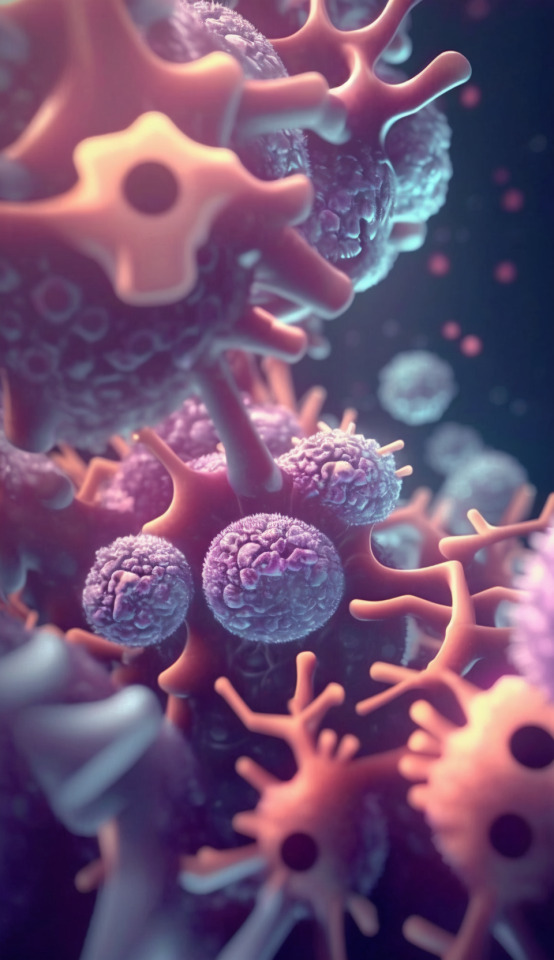
Major Milestones in Nanotechnology
Scanning Probe Microscopy
In the early 1980s, the invention of scanning probe microscopy revolutionized nanotechnology research. The scanning tunneling microscope (STM) and atomic force microscope (AFM) allowed scientists to visualize and manipulate individual atoms and molecules with unprecedented precision. These breakthroughs opened up new possibilities for studying nanoscale phenomena and laid the groundwork for further advancements in the field.
Fullerenes and Nanotubes
In 1985, a significant discovery shook the scientific community—the identification of fullerenes. Researchers Robert Curl, Harold Kroto, and Richard Smalley stumbled upon these unique carbon molecules, marking the birth of a new class of nanomaterials. Fullerenes paved the way for the development of carbon nanotubes, cylindrical structures with remarkable strength and conductivity. These nanotubes would go on to become key building blocks in various nanotechnology applications.
Nanotechnology in Medicine
Nanotechnology's potential to revolutionize healthcare became evident with the advent of targeted drug delivery systems. Nanoparticles, such as liposomes and polymeric nanoparticles, can be designed to encapsulate drugs and deliver them precisely to targeted cells or tissues. This approach minimizes side effects and maximizes therapeutic efficacy. Additionally, nanotechnology plays a vital role in imaging techniques, enabling highly sensitive and precise detection of diseases at the molecular level.
Nanoelectronics and Quantum Computing
The relentless pursuit of smaller, faster, and more energy-efficient electronics led to the emergence of nanoelectronics. By utilizing nanoscale materials and devices, researchers have pushed the boundaries of traditional silicon-based technology. Nanoscale transistors, quantum dots, and nanowires have paved the way for advancements in computing power, memory storage, and energy efficiency. Furthermore, the field of quantum computing, which harnesses quantum phenomena at the nanoscale, holds the promise of solving complex problems that are currently beyond the capabilities of classical computers.
Nanomaterials and Energy
Nanotechnology has also played a significant role in addressing global energy challenges. By developing advanced nanomaterials, scientists have made strides in enhancing solar cell efficiency, enabling the production of clean and renewable energy. Nanomaterials have also been employed in energy storage devices, such as batteries and supercapacitors, to improve their performance and longevity. Additionally, nanotechnology has opened up avenues for energy harvesting and energy conversion, contributing to a more sustainable future.
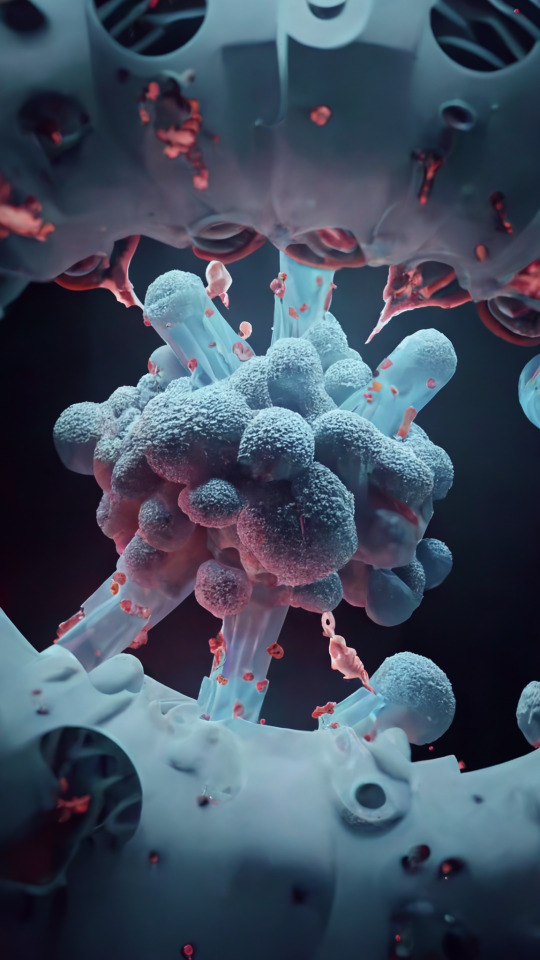
Transformative Applications of Nanotechnology
Nanomedicine and Disease Treatment
Nanotechnology has revolutionized medicine, offering innovative solutions for disease diagnosis, treatment, and prevention. Targeted drug delivery systems, nanoscale imaging techniques, and nanobiosensors have transformed the landscape of healthcare, enabling personalized and precise interventions. From cancer therapy to regenerative medicine, nanotechnology has the potential to revolutionize patient care and improve outcomes.
Nanoelectronics and Wearable Technology
The marriage of nanotechnology and electronics has given rise to the era of wearable technology. Nanoscale sensors, flexible displays, and energy-efficient components have paved the way for smartwatches, fitness trackers, and augmented reality devices. These advancements in nanoelectronics have made it possible to integrate technology seamlessly into our everyday lives, enhancing convenience and connectivity.
Nanomaterials and Advanced Manufacturing
Nanotechnology has propelled advancements in materials science and manufacturing. Nanomaterials with tailored properties and enhanced performance characteristics have found applications in aerospace, automotive, and construction industries. From lightweight and high-strength composites to self-cleaning surfaces and energy-efficient coatings, nanomaterials have revolutionized product design, durability, and sustainability.
In Conclusion
Nanotechnology's journey from its conceptualization to its present-day applications has been nothing short of extraordinary. The field's remarkable achievements in diverse domains, including medicine, electronics, and energy, continue to drive innovation and shape the future. As we delve deeper into the nanoscale world, the possibilities seem boundless. With ongoing research and collaboration, nanotechnology will undoubtedly unlock new frontiers, leading to breakthroughs that will reshape industries and improve lives across the globe.
#history of nanotechnology#richard feynman#chemestry#green chemistry#nanotechnology#science#nanomaterials#nanocoating#nanomedicine#probe microscopy#revolutionary
3 notes
·
View notes
Text
Kelvin Probe Force Microscopy (KPFM)
Introduction to KPFM
Kelvin Probe Force Microscopy (KPFM), also known as Surface Potential Microscopy, is a powerful scanning probe microscopy technique used to measure the contact potential difference (CPD), or electrostatic surface potential, between the tip of a probe and the sample surface. The technique is based on the original work of Lord Kelvin, who developed the theory of contact…
View On WordPress
0 notes
Text
youtube
Watch the American Climate Leadership Awards 2024 now: https://youtu.be/bWiW4Rp8vF0?feature=shared
The American Climate Leadership Awards 2024 broadcast recording is now available on ecoAmerica's YouTube channel for viewers to be inspired by active climate leaders. Watch to find out which finalist received the $50,000 grand prize! Hosted by Vanessa Hauc and featuring Bill McKibben and Katharine Hayhoe!
#ACLA24#ACLA24Leaders#youtube#youtube video#climate leaders#climate solutions#climate action#climate and environment#climate#climate change#climate and health#climate blog#climate justice#climate news#weather and climate#environmental news#environment#environmental awareness#environment and health#environmental#environmental issues#environmental justice#environment protection#environmental health#Youtube
16K notes
·
View notes
Video
20230612_F0001: AFM probe holder closeup by Wei-Feng Xue
Via Flickr:
- Scientific equipment seen over #10YearsAgo. This is the closeup of a probe holder for the classic MultiMode SPM/AFM microscope with a probe inserted.
#atomic force microscopy#microscopy#AFM#probe#cantilever#metal#instrument#science#scientific#technology#laboratory#lab#equipment#macro#flickr
0 notes
Text
Atomic force microscopy, or AFM, is a widely used technique that can quantitatively map material surfaces in three dimensions, but its accuracy is limited by the size of the microscope's probe. A new AI technique overcomes this limitation and allows microscopes to resolve material features smaller than the probe's tip.
The deep learning algorithm developed by researchers at the University of Illinois Urbana-Champaign is trained to remove the effects of the probe's width from AFM microscope images. As reported in the journal Nano Letters, the algorithm surpasses other methods in giving the first true three-dimensional surface profiles at resolutions below the width of the microscope probe tip.
Continue Reading.
47 notes
·
View notes
Text
CTVT and a weird niche theory I fell down the rabbit hole about - giant transforming retroviruses???
This is a story about how a single line on a wikipedia page sent me down a rabbit hole of finding one scientist's fringe theory that's juuuust plausible enough to make me question everything while almost certainly being absolute fucking bunk.
Some background
So, on parts of tumblr at least we all know about Canine Transmissible Venereal Tumour, aka The Immortal Cancer Dog. For those who don't know, it's a cancer dogs get, usually on their junk, that unlike most other cancers, isn't made up of their own cells. The cells are actually all descended from this one dog or wolf that lived like 11,000 years ago and are, arguably, all technically that one dog. A dog that became a single-celled infectious disease.
We have a wealth of genetic, histological and observational evidence for this. As in, we know it what population of canids it came from, we know it's got a weird chromosomal structure compared to normal dogs, we know it's genetically distinct from the hosts. We also know it's not the only one out there: There's a similar thing in Syrian hamsters and also the famous Tasmanian Devil Facial Tumour Disease (DFTD).
Which made me pause when I was reading something on wikipedia about the devil facial tumour and saw a line mentioning that it was now known to be caused by a giant virus, much like CTVT. Which...huh? Oh I hadn't heard that afore.
Giant viruses
Ok so giant viruses are a thing and they're fuckin cool. They're a relatively recent discovery and comparatively huge, i.e. bigger than a bunch of bacteria. They were only discovered in 1981 and we still don't know an enormous amount about them but they're big and have large genomes and because of the way viruses are they're not easy to detect unless you're specifically looking for them.
They show up under microscopy (sometimes) and you can find them with genetic probes but you gotta already be looking for them to see that really. Current research though basically says they're more common than we think, just overlooked, and there's software out there that scans through genomic data to find sequences that might indicate their presence. There's even a possibility that one group might be involved in some cases of pneumonia in humans, though I need to stress that that's extremely not confirmed right now.
The "wait, what?" moment
So I mentioned that it was a line in the wiki article for DFTD that had me going "wait, really?", the line in question was this:
A study found evidence for an infectious agent resembling a giant virus that was capable of turning heathy cells into cancer cells. It was found to be a huge retrovirus with similar viruses being found in human and canine cancer cells.
Big If True.
So of course I check the source, which was a 2020 paper by Lusi et al. titled "A transforming giant virus discovered in Canine Transmissible Venereal Tumour: Stray dogs and Tasmanian devils opening the door to a preventive cancer vaccine".
Hang on, CTVT not DFTD? This is where some alarm bells went off because uh, as mentioned at the start, we know a shit ton about CTVT. Including the fact that it's all one specific dog. Which doesn't fit at all with the idea that it's caused by a virus transforming host cells into cancer cells.
So what fucking gives? What is this research that fully overturns decades of pretty conclusive research to the contrary?
Is this another case of Dr Barbara McClintock? Who spent decades being ridiculed by the scientific community over her wild theory that was, in fact, 100% right even if it seemed to fly in the fact of all prior evidence?
Or is this a Dr Donald I. Williamson situation wherein a scientist with appropriate training is just wildly but extremely vehemently wrong?
#science#genetics#cancer#canine transmissible venereal tumour#devil facial tumour disease#niche science#I'm breaking this up into several sections for readability#stay tuned for more#also feel free to ask any questions about stuff#I'll provide links to things as well but I know tumblr can bury posts with certain links in and idk if researchgate counts
25 notes
·
View notes
Text
When water vapor meets metal, the resulting corrosion can lead to mechanical problems that harm a machine's performance. Through a process called passivation, it also can form a thin inert layer that acts as a barrier against further deterioration.
Either way, the exact chemical reaction is not well understood on an atomic level, but that is changing thanks to a technique called environmental transmission electron microscopy (TEM), which allows researchers to directly view molecules interacting on the tiniest possible scale.
Professor Guangwen Zhou -- a faculty member at Binghamton University, State University of New York's Thomas J. Watson College of Engineering and Applied Science -- has been probing the secrets of atomic reactions since joining the Department of Mechanical Engineering in 2007. Along with collaborators from the University of Pittsburgh and the Brookhaven National Laboratory, he has studied the structural and functional properties of metals and the process of making "green" steel.
Read more.
#Materials Science#Science#Water#Corrosion#Metals#Passivation#Reactions#Materials characterization#Transmission electron microscopy#Binghamton University
13 notes
·
View notes
Text
youtube
Watch the 2024 American Climate Leadership Awards for High School Students now: https://youtu.be/5C-bb9PoRLc
The recording is now available on ecoAmerica's YouTube channel for viewers to be inspired by student climate leaders! Join Aishah-Nyeta Brown & Jerome Foster II and be inspired by student climate leaders as we recognize the High School Student finalists. Watch now to find out which student received the $25,000 grand prize and top recognition!
#ACLA24#ACLA24HighSchoolStudents#youtube#youtube video#climate leaders#climate solutions#climate action#climate and environment#climate#climate change#climate and health#climate blog#climate justice#climate news#weather and climate#environmental news#environment#environmental awareness#environment and health#environmental#environmental issues#environmental education#environmental justice#environmental protection#environmental health#high school students#high school#youth#youth of america#school
17K notes
·
View notes
Text
Types of Microscopes
1. Simple Microscope
2. Compound Microscope
3. Phase Contrast Microscope
4. Fluorescence Microscope
5. Electron Microscope
6. Scanning Electron Microscope (SEM)
7. Transmission Electron Microscope (TEM)
8. Dark Field Microscope
9. Dissecting Microscope (Stereo Microscope)
10. Digital Microscope
11. Scanning Probe Microscope (SPM)
12. Atomic Force Microscope (ATM)
13. Inverted Microscope
14. Acoustic Microscope
15. X-Ray Microscope
16. Polarizing Microscope
17. Metallurgical Microscope
18. Pocket Microscope
19. USB Microscope
20. Confocal Microscope
21. Laser Scanning Microscope
22. Differential Interference Contrast Microscope (DIC)
23. Near-field Scanning Optical Microscope (NSOM)
24. Raman Microscope
25. Super-resolution Microscope
26. Cryo-electron Microscope
27. Time-lapse Microscope
There is a wide range of microscopy techniques and instruments used in various fields of science and research.
#forensic#forensics#criminology#forensic science#evidence#criminalistic#forensic field#crime#forensic science notes#crime scene investigation#electron microscope#microscope
6 notes
·
View notes
Text
The deep learning algorithm developed by researchers at the University of Illinois Urbana-Champaign is trained to remove the effects of the probe’s width from AFM microscope images. As reported in the journal Nano Letters, the algorithm surpasses other methods in giving the first true three-dimensional surface profiles at resolutions below the width of the microscope probe tip.
5 notes
·
View notes
Text
#science#physic#news#technology#space#Astronomy#NASA#Night#Sky#Stars#Space#Science#Universe#Cosmos#Cosmic#Solar System#Milky Way#Bioluminescence#Galaxy#Nebula#Constellations#Constellation#Rainbow#Bright
13 notes
·
View notes
Text
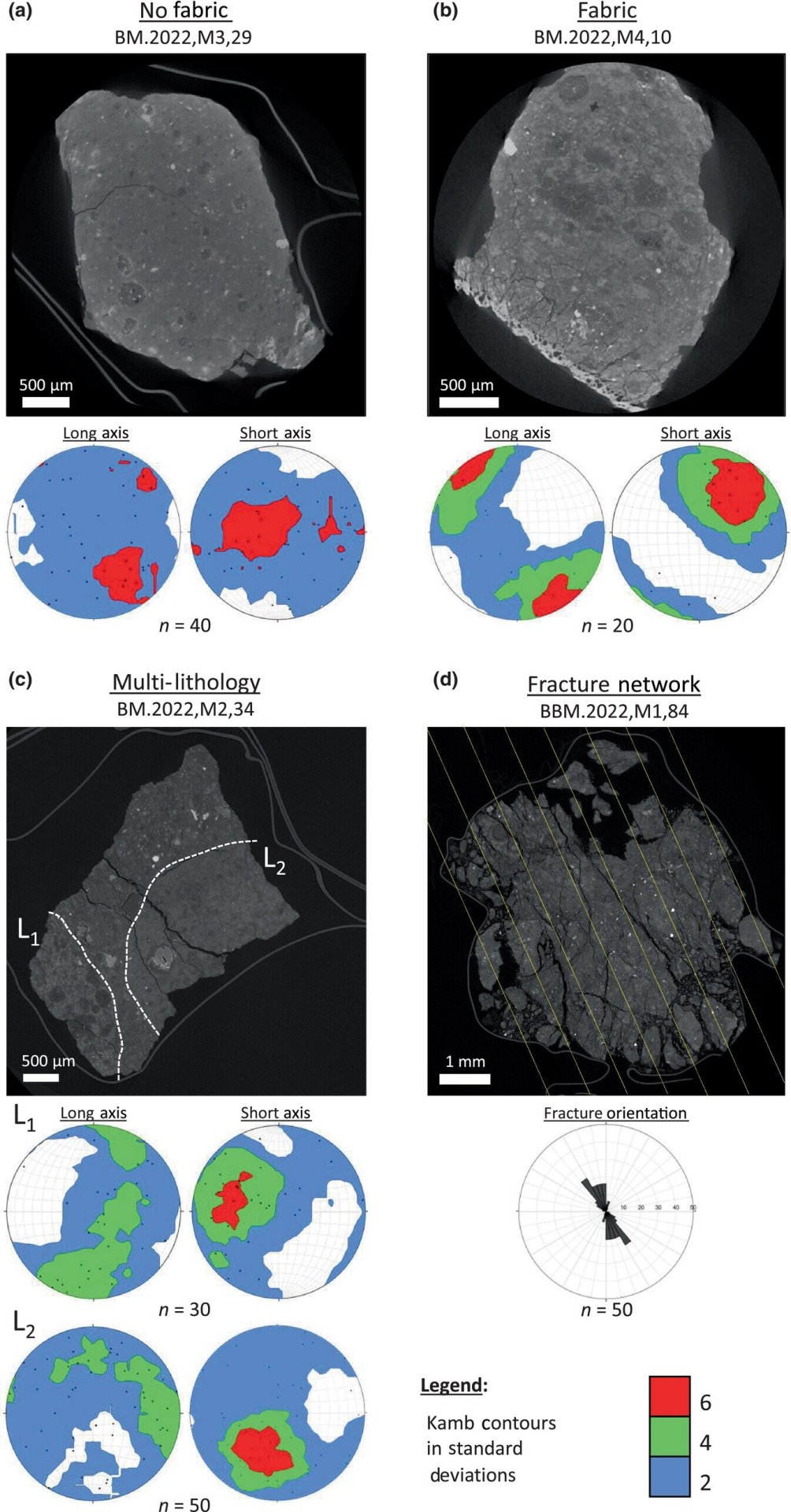
New analysis reveals the brutal history of the Winchcombe meteorite's journey through space
Intensive new nano-analysis of the Winchcombe meteorite has revealed how it was affected by water and repeatedly smashed apart and reassembled on the journey it took through space before landing in an English sheep field in 2021.
Researchers from dozens of institutions in the UK, Europe, Australia, and the U.S. collaborated on the research. Together, they subjected mineral grains in fragments of the Winchcombe meteorite to a diverse range of cutting-edge analytical techniques.
Their work, which was conducted on a scale more typically reserved for investigating samples returned to Earth by multibillion-dollar space missions, has given them unparalleled insight into the history of the Winchcombe meteorite in the process.
Their analysis has helped them roll back the clock to the meteorite's earliest days as an ice-bearing dry rock, then trace its transformation through the melting of the ice into a ball of mud which was broken apart and rebuilt over and over again.
The Winchcombe meteorite is an unusually well-preserved example of a group of space rocks called CM carbonaceous chondrites, which were formed during the earliest periods of the solar system. They carry minerals altered by the presence of water on their parent asteroid.
Analysis of those minerals within the Winchcombe meteorite will help scientists unravel the answers to questions around the processes which formed our solar system, including the possible origins of the Earth's water.
Unlike most meteorites, which can lie undiscovered for months or years after entering the Earth's atmosphere, the Winchcombe meteorite was recovered within hours of hitting the ground. Members of the public, citizen scientists and the amateur meteorite enthusiast community recognized that rocks had hit the ground and helped scientists to identify the location of samples, aiding their recovery.
The speed of its recovery helped prevent it from being further altered by exposure to the Earth's atmosphere, offering scientists a rare opportunity to learn more about CM chondrites by scrutinizing it down to the atomic level.
In a paper published in the journal Meteoritics and Planetary Science, researchers describe how they explored the complex breccia of the Winchombe meteorite.
A breccia is rock formed from chunks of other rocks cemented together in a structure called a cataclastic matrix. The team's analysis carried out using sophisticated techniques including transmission electron microscopy, electron backscatter diffraction, time of flight secondary ion mass spectrometry and atom probe tomography, showed that the Winchcombe breccia contains eight distinct types of CM chondrite rocks.
The team found that each type of rock has been altered to different degrees by the presence of water, not just between the types of rocks but also, surprisingly, within them. The team found many examples of unaltered mineral grains next to completely altered ones, even down to the nano-scale. For comparison, a human hair is around 75,000 nanometers thick.
The team suggests that the likely explanation for the jumbled nature of the different types of rocks and their extreme variation in aqueous alteration is that the Winchcombe asteroid was repeatedly smashed into pieces by impacts with other asteroids before being pulled back together.
Another significant finding of the analysis is the unexpectedly high proportion of carbonate minerals like aragonite, calcite, and dolomite, along with minerals that have subsequently replaced carbonates, in the samples the team analyzed.
This suggests that the Winchcombe meteorite was more carbon-rich than previously thought and likely accumulated abundant frozen CO2 before it melted to form the carbonate minerals the team observed. The team's analysis could help explain the large carbonate veins that have been observed on the surface of the Asteroid Bennu by NASA's OSIRIS-REx mission.
The study was led by Dr. Luke Daly of the University of Glasgow, who is also the lead author of the paper. Dr. Daly also led the search party which recovered the largest fragment of the Winchcombe meteorite after it was spotted as a fireball streaking across the skies over Gloucestershire on February 28th, 2021.
Dr. Daly said, "We were fascinated to uncover just how fragmented the breccia was within the Winchcombe sample we analyzed. If you imagine the Winchcombe meteorite as a jigsaw, what we saw in the analysis was as if each of the jigsaw pieces themselves had also been cut into smaller pieces, and then jumbled in a bag filled with fragments of seven other jigsaws.
"However, what we've uncovered in trying to unjumble the jigsaws through our analyses is new insight into the very fine detail of how the rock was altered by water in space. It also gives us a clearer idea of how it must have been battered by impacts and reformed again and again over the course of its lifetime since it swirled together out of the solar nebula, billions of years ago."
Dr. Leon Hicks from the University of Leicester and co-author of the study said, "This level of analysis of the Winchcombe meteorite is virtually unprecedented for materials that weren't directly returned to Earth from space missions, like moon rocks from the Apollo program or samples from the Ryugu asteroid collected by the Hayabusa 2 probe."
Paper co-author Dr. Martin Suttle from the Open University said, "The speed which the fragments of Winchcombe were recovered left us with some pristine samples for analysis, from the centimeter scale all the way down to individual atoms within the rocks. Each grain is a tiny time capsule that, taken together, helps us build a remarkably clear view into the formation, re-formation, and alteration that occurred over the course of millions of years."
Dr. Diane Johnson from Cranfield University, a co-author of the paper, added, "Research like this helps us understand the earliest part the formation of our solar system in a way that just isn't possible without detailed analysis of materials that were right there in space as it happened. The Winchcombe meteorite is a remarkable piece of space history and I'm pleased to have been part of the team that has helped tell this new story."
IMAGE....Representative μCT slices from chips of the Winchcombe meteorite and contoured orientation data on the long and short shape axes of chondrules plotted on a lower hemisphere stereographic projections and n denotes the number of chondrules measured for each plot. Credit: Meteoritics & Planetary Science (2024). DOI: 10.1111/maps.14164
2 notes
·
View notes
Photo
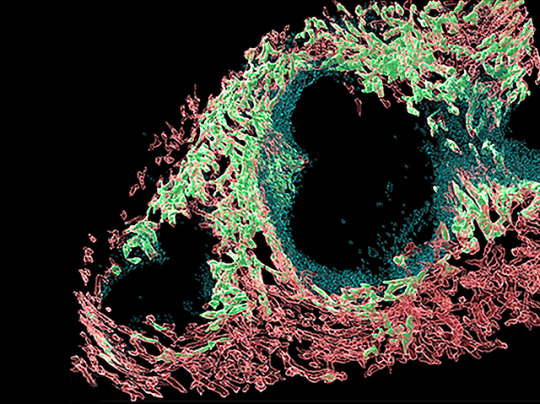
Directing Traffic
Chemical messengers called chemokines are the traffic police of your body, telling cells on the move where to go via a chemokine concentration gradient. Atypical chemokine receptors (ACKRs) on certain cells help create these gradients by binding and engulfing specific chemokines. Three called GPR182, ACKR3 and ACKR4 are located in lymph and blood vessels, and research suggests may be found together in certain microenvironments within organs. However, there’s no comprehensive map of where they are. Researchers now genetically engineer mice with fluorescently-tagged GPR182, ACKR3, ACKR4 and ACKR-specific chemokines to locate them. Fluorescence microscopy revealed unique and shared distribution patterns of these ACKRs in a variety of organs, including the spleen (pictured, ACKR4 in green, GPR182 in red). Meanwhile, fluorescently-tagged chemokines revealed distinct activity zones for ACKR4 and GPR182 in the liver. These mouse models, therefore, provide a useful tool to probe ACKRs in different organs and microenvironments.
Written by Lux Fatimathas
Image from work by Serena Melgrati and colleagues
Institute for Research in Biomedicine, Università della Svizzera italiana, Bellinzona, Switzerland
Image originally published with a Creative Commons Attribution 4.0 International (CC BY 4.0)
Published in PLOS Biology, May 2023
You can also follow BPoD on Instagram, Twitter and Facebook
6 notes
·
View notes
Note
🌵
cactus ⇢ something you’re currently learning (about)?
Fun answer: woodworking! I'm working on building myself a bench so I can start building myself some simple furniture and boxes. So far it mostly seems to boil down to "sharpen your chisel", but its a lot of fun!
Boring answer: mortgages. Might be buying a house soon.
Extremely specific technical answer: photo-induced atomic force microscopy; I'm potentially starting on a project for a conference next year, so I need to figure out the key differences between PIAFM and scanning probe microscopy.
Thanks for the ask!
2 notes
·
View notes
Text
The Significance of Piezo Stack Actuators
In the world of precision engineering, where accuracy and control reign supreme, the advent of piezo stack actuators has heralded a new era. These remarkable devices, born from the marvel of piezoelectricity, have swiftly become indispensable tools across industries that demand unparalleled precision and responsiveness.

In this article, we delve into the multifaceted importance of piezo stack actuators, shedding light on their mechanics, applications, and transformative impact.
For More Information Please visit, piezo stacks
The Marvel of Piezo Stack Actuators
At the core of piezo stack actuators lies a stack of meticulously crafted piezoelectric ceramic layers. This assembly is a testament to scientific ingenuity, as each layer is polarized with alternating positive and negative charges. The resulting electromechanical magic occurs when an electric voltage is applied. The layers expand or contract in perfect harmony, delivering linear motion with a level of precision that has redefined the boundaries of possibility.
Precision Redefined: Control at the Sub-Micrometer Level
The defining attribute of piezo stack actuators is their unparalleled precision. This precision is not merely a catchphrase; it's a testament to the inherent characteristics of piezoelectric materials. When voltage courses through the stack, the response is immediate and exact, generating forces that translate into controlled linear motion. This level of fine-tuned movement, often reaching sub-micrometer scales, is nothing short of awe-inspiring and is particularly vital in applications where infinitesimal adjustments can make all the difference.
A World of Applications Unveiled
Piezo stack actuators have woven themselves seamlessly into an array of industries, leaving a trail of transformative impacts in their wake. In the realm of optics, these actuators play a pivotal role in laser systems, facilitating the precise focusing of laser beams. This precision translates into enhanced efficiency in material processing, improved medical procedures, and more efficient communication technologies.
Microscopy, an arena where detail is king, has been revolutionized by piezo stack actuators. These devices enable the delicate movement of microscope lenses, affording researchers the ability to capture intricate images of minuscule structures with unparalleled clarity.
Beyond Earth: Piezo Stacks in Aerospace and Beyond
It's not just on Earth where piezo stack actuators have left their mark. In aerospace, these devices are instrumental in stabilizing flight control surfaces, making minute adjustments that contribute to the safety and precision of airborne vehicles. Even beyond our planet, in the vast expanse of space, piezo stack actuators play a role in satellite stabilization and the deployment of mechanisms in space probes, ensuring accuracy and functionality in the most challenging environments.
Navigating Challenges and Harnessing Potential
While the potential of piezo stack actuators is immense, certain considerations accompany their integration. Thermal effects can influence their performance, demanding careful temperature management. Moreover, the need for a driving voltage to maintain position may be a factor in power-sensitive applications. However, these challenges pale in comparison to the benefits these devices bring to industries that value and rely on precision.

Conclusion: Precision Pinnacle Achieved
In the grand tapestry of precision engineering, piezo stack actuators stand as a pinnacle of achievement. Their ability to translate electrical energy into controlled, precise motion has opened doors to advancements that were once mere dreams. From medical imaging to aerospace navigation, their impact reverberates across disciplines, promising a future where precision is not just a possibility but a reality. As we continue to explore and harness the significance of piezo stack actuators, we propel ourselves toward a world where precision is the norm, and the boundaries of possibility continue to expand.
2 notes
·
View notes
Video
20230611_F0001: AFM probe holder by Wei-Feng Xue
Via Flickr:
- Scientific equipment seen over #10YearsAgo. This is a probe holder the classic MultiMode SPM/AFM microscope.
#atomic force microscopy#microscopy#AFM#probe#cantilever#metal#instrument#science#scientific#technology#laboratory#lab#equipment#macro#flickr
0 notes
Note
So on the whole nano vehicles thing!
This is something people are researching in the field of nanotechnology! It's a field that combines chemistry, biology, physics (and maths/computer science in some ways but that makes it even more complicated) on the nano scale! Now first what even is nano? Nano refers to the scale of something of 10^-9 in this case it's about sizes but nano is a prefix so eh.
Regardless nanotech is a relatively new field (if you're interested in it there's a lecture called "there's plenty of room at the bottom" by Richard P. Feynman who is often considered the parent of nanotechnology) having only been brought up by the previously mentioned, R. Feynman in 1959 and only really sparking the research field to start in the 1980s.
Anyways so yay small scale science! So nanovehicles: nanovehicles are often bottom up (see: bottom-up = using bricks to build a house vs. top down = carving a house out of rock) produced small "vehicles". They came about because we're looking for ways to transport cargos in a more controlled method than we've been able to mimicking certain biological functions. But the way we've being going about it is by making tiny little car shaped molecules. As you can see in the image below just car shaped with Buckminster fullerene (not actually buckminster fullerene but spherical carbon structures) type wheels.

So basically just like cars work, movement is perpendicular to the axle(usually), however you cannot change the positioning of the axles so this thing can only move forwards and backwards.
Oh quick little side note to even analyse the motion of these things, we have to put them on a surface and depending on the type of motor that can lead to either a caterpillar like motion or just increasingly long tails. But what we can also do is use the tips AFM (atomic force microscopy)or SPM (scanning probe microscopy) and move them with that however that's incredibly expensive Sheesh. We have to do this on a surface because of Brownian motion because these things are so small they'll just move around and about randomly in solution.
Okay back to vehicles. So before I showed a 2 directional transverse moving nanocar. But in the previous ask I said there's nanovehicles that can only spin around themselves. And that's because the Axel's are thusly oriented that any transverse motion it wants to make would be obstructed by another axle. So then it can only do the spinny thing.
See below:
a) shows translational motion such as a nanocar can make.
b) shows rotational motion, such as the nanovehicle I was so excited about.
As well as these images having microscopy which shows how they have moved and where the vehicles are and it's very cool.
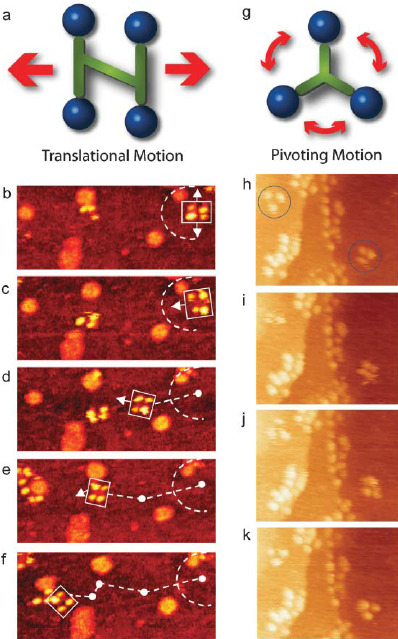
And below you can see different types of nanovehicles, 22 & 23 can do translational motion forwards and backwards. 24 can move in a slight circle around a middle point that is not its own center point.
And then you have 25, my beloved, it can only spin in circles <3 its sole purpose is to just spin around and around and around and I think that's somehow so very poetic, the fact you've been made in such a way that your sole purpose cannot be fulfilled but you did prove that yes we can move nanovehicles in more than just the two directions. Also that molecule is a blorbo to me.

i forgot all about this and i have still never been so interested in something i understood next to nothing about thank you for infodumping lulu i heart you
2 notes
·
View notes
Text
Deep learning–based data analysis software by ORNL promises to accelerate materials research: AI Applications
AI Generated Image: Neural Networks
Researchers at the Department of Energy’s Oak Ridge National Laboratory have developed a machine-learning inspired software package that provides end-to-end image analysis of electron and scanning probe microscopy images.
Known as AtomAI, the package applies deep learning to microscopy data at atomic resolutions, thereby providing quantifiable physical…

View On WordPress
5 notes
·
View notes